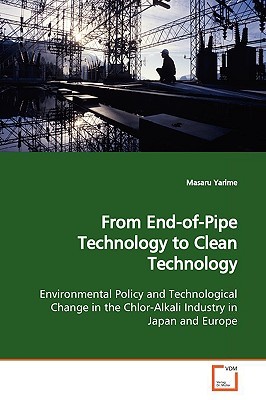
- We will send in 10–14 business days.
- Author: Masaru Yarime
- Publisher: VDM Verlag
- ISBN-10: 3639159462
- ISBN-13: 9783639159462
- Format: 15.2 x 22.9 x 2.7 cm, minkšti viršeliai
- Language: English
- SAVE -10% with code: EXTRA
Reviews
Description
The intensive industrial development, while producing numerous useful products, has been increasingly interfering with the limited capacities of ecosystems. Various environmental policies have been introduced to reduce emissions. While there is a serious concern about negative impacts of tightened regulations on industry, they could actually enhance industrial competitiveness by encouraging innovation in the long run. This book sheds a fresh light on this debate by closely examining the interaction between environmental policy and technological change in the chlor-alkali industry in Japan and Europe. Weak regulations promote end-of-pipe technological solutions, which would function to prolong the life of existing, often obsolescent, production processes. Excessively stringent regulations, in contrast, while forcing clean technological options, could induce premature decisions on inferior technologies. Institutional designs for public-private collaboration will be important in fostering innovation for the best clean technologies. The analysis should be useful to corporate managers and policy makers for strategic decision makings in a transition towards a sustainable society.
EXTRA 10 % discount with code: EXTRA
The promotion ends in 23d.20:06:23
The discount code is valid when purchasing from 10 €. Discounts do not stack.
- Author: Masaru Yarime
- Publisher: VDM Verlag
- ISBN-10: 3639159462
- ISBN-13: 9783639159462
- Format: 15.2 x 22.9 x 2.7 cm, minkšti viršeliai
- Language: English English
The intensive industrial development, while producing numerous useful products, has been increasingly interfering with the limited capacities of ecosystems. Various environmental policies have been introduced to reduce emissions. While there is a serious concern about negative impacts of tightened regulations on industry, they could actually enhance industrial competitiveness by encouraging innovation in the long run. This book sheds a fresh light on this debate by closely examining the interaction between environmental policy and technological change in the chlor-alkali industry in Japan and Europe. Weak regulations promote end-of-pipe technological solutions, which would function to prolong the life of existing, often obsolescent, production processes. Excessively stringent regulations, in contrast, while forcing clean technological options, could induce premature decisions on inferior technologies. Institutional designs for public-private collaboration will be important in fostering innovation for the best clean technologies. The analysis should be useful to corporate managers and policy makers for strategic decision makings in a transition towards a sustainable society.


Reviews